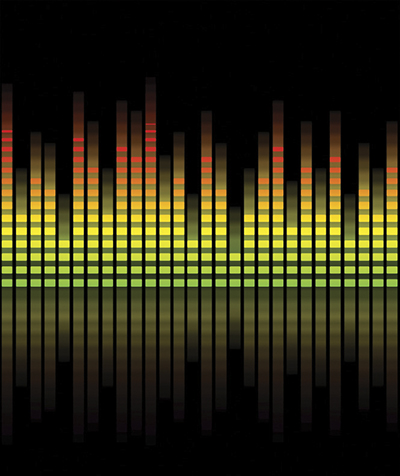
Jay Yeary
Hello fellow TV Technology readers. I’ve been reading the audio columns in this magazine for years, and find myself more than a little surprised to be writing one now. The world of television audio has become much more complex and confusing than it was just a few years ago, but it’s the world I’ve chosen to live in for more than 30 years, which I still find interesting and often puzzling. Together, I hope that over the coming months we’ll be able to do some exploration and examination of this world, where it’s going and what we’re up against.
Like many of you, one of the issues I’ve had to deal with recently was how to comply with the CALM Act. Ever since it was signed into law, broadcasters have essentially taken one of two paths to compliance. Most large broadcasters and cable networks favor the first of these, which requires measuring content loudness and dialnorm before it goes to air, then making sure the two match. This method ensures that whatever leaves the broadcast air chain will play out at the proper loudness level in the home. Smaller broadcasters prefer the second path, which is to obtain and install a processor that manages loudness for them without adding other equipment or changing their workflow significantly. The second solution seems simple to implement, but there are many things to consider before taking what appears to be the easy path to compliance.
FIRST, DO NO HARM
The first of these paths is designed not only to ensure that content (including commercials) airs at the correct loudness level, but also that it airs practically unaltered. However, making this happen takes quite a bit of effort and expense. Meters and software that measure loudness as specified in ATSC A/85 must be purchased and installed, then, loudness and true peak measurements need to be made. Dialnorm will also need to be measured for content airing on channels sending agile metadata to the home, and it will need to be re-authored if the measured dialnorm and loudness don’t match. Channels sending fixed metadata to the home need to make sure that what is measured meets their specification and the values sent from their AC-3 encoder (−24 LKFS for non-AC-3 broadcasters). Content that does not meet spec will either need to be returned to the content creator or be modified. Fortunately, modification is nothing more than a level shift, and virtually always means lowering the level. Content rarely measures low, but if it does, the level will be brought up and there is a slight chance that a true peak limiter will be engaged. At the end of the process the content is essentially unchanged from the way it was received.

It’s not quite that easy in the real world because even broadcasters using this first method will have a processor in line as a safety net. This is especially necessary when broadcasting live events like sports and awards shows which can be difficult to control at times. However, these processors are usually set to do little to no processing on content that falls within the proper loudness range.
BEYOND THE ‘ON’ BUTTON
The primary reason some broadcasters go through all of the expense and trouble of managing loudness before air is primarily because they want to maintain the audio integrity of the content but also so they can ensure a better controlled listening experience for their viewers.
A broadcaster who chooses to manage loudness using a processor in the broadcast chain typically does so because they do not have the financial resources to put the first method into practice or the manpower to implement it. For them, it’s not as much about audio integrity as it is about being CALM compliant in the most financially responsible way possible. No matter the reason, simply turning the processor on won’t necessarily make the channel compliant.
First of all, the processor needs to be configured correctly. Many times, these devices simply get unboxed, stuck in the rack, turned on, and never looked at again. Loudness processors are complicated devices doing a difficult task and they need to be tailored to meet the loudness specifications of the channel. Some of these processors do more than simply control loudness and anyone using them must decide in advance whether they need to use the additional features such as upmixing, equalization, compression, etc, all of which will change the sound of the content when it passes through. In addition, different loudness settings may be applied to different types of content, such as programs or commercials, which are triggered by automation systems. For instance, a broadcaster may want to pass network programming through untouched, but heavily limit commercials. Regardless, these settings don’t typically come inside the box, and the best results will be obtained when a manufacturer’s representative or a professional who specializes in loudness management configures the processors.
The professional video industry's #1 source for news, trends and product and tech information. Sign up below.
Next, careful thought should be given to what will happen if the box quits working while it’s on the air. If this occurs, a broadcaster may suddenly find themselves in violation of CALM and subject to fines because they will no longer have control of the loudness on the channel. Since content has not been loudness-managed prior to air, and since there is no processor to control it, the content will play out at its original level. Needless to say, a standby unit is needed, either in the air chain or where it’s quickly accessible. Operating without the processor in line because it failed or lost its settings means no longer managing loudness.
Of course, the area where these processors make the most impact is on the sound of the broadcast. Not only can they tailor and modify the sound of the channel, they may alter the sound of the content in unintended ways. There is a high likelihood that some content will pass through that is wildly out of spec and the processor may not treat it kindly. Loud content is likely to get crushed while soft content will likely be left alone, but this really depends on the processor and how it’s configured. Regardless, if the processor makes significant changes to the audio, it could negatively alter how the content sounds, and if that happens, someone is going to notice. If that magic loudness processor is destroying the sound of the digital content, broadcasters can expect dissatisfied listeners. They may find themselves in the awkward situation of being fully CALM compliant while still the target of complaints to the FCC.
Jay Yeary is an audio engineer and broadcast audio consultant. He spends his days working in the engineering group of a prominent cable television broadcaster.
